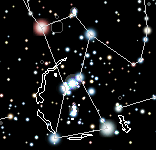

If the Stellarium planetarium was helpful for your research work, the following acknowledgment would be appreciated:
Astronomy skychart windows 10#
Linux/Unix Windows 10 and above macOS 11.0 and above.Mouse, Touchpad or similar pointing device.3D graphics card which supports OpenGL 2.1 and GLSL 1.3 or OpenGL ES 2.0.
Astronomy skychart windows 7#
Linux/Unix Windows 7 and above macOS 10.15 and above.D/L/Nakota and Ojibwe skycultures withdrawn.Zotti gave a presentation about Virtual Archaeoastronomy with Stellarium (YouTube) for the Society for Cultural Astronomy in the American Southwest (SCAAS) on February 25th, 2023 Wolf gave a presentation about Stellarium 1.0 (YouTube) at the Siberian Astronomical Forum SibAstro 2022 on September 25th, 2022 Wolf gave a presentation about Stellarium - key changes in the last 5 years (YouTube) at the Siberian Astronomical Forum SibAstro 2021 on September 25th, 2021 Zotti gave a presentation about Stellarium (YouTube) for the China-VO (Virtual Observatory of the Chinese Academy of Sciences) on February 1st, 2021 Zotti gave an invited talk (YouTube) at the IAU Symposium 367 on December 9th, 2020 Zotti gave a talk about creating 3D sceneries (YouTube) at the TAG2016 Skyscapes session on December 20th, 2016 add your own deep sky objects, landscapes, constellation images, scripts.ability to add new solar system objects from online resources.plugin system adding artifical satellites, ocular simulation, telescope control and more.skinnable landscapes with spheric panorama projection.HTTP interface (web-based control, remote control API).graphical interface and extensive keyboard control.spheric mirror projection for your own low-cost dome.fisheye projection for planetarium domes.very realistic atmosphere, sunrise and sunset.images of nebulae (full Messier catalogue).constellations for 40+ different cultures.asterisms and illustrations of the constellations.extra catalogue with more than 1 million deep-sky objects.default catalogue of over 80,000 deep-sky objects.extra catalogues with more than 177 million stars.default catalogue of over 600,000 stars.A very useful add to the app would be to make use of location information provided by cell and ip to see a list of reporting observatory’s nearby. If not that, then allow for notes in the favorites list on each entry so you would not need to enter the site report and then look to find it on the map.

Adding GPS coordinates might help, but so would a road, city and state. If their are multiple locations that have that street or city name, the usefulness of that information is quickly diminished.

It’s kind of like someone only telling you the name of the street or city they live in. This is never a problem if you only plan to frequent ones that are near you and few in number, however, if you’d like to travel and plan out night sky observations along your trips the location (geographic) information is not contained in the name of each observatory. That said, not all observatory names tell you about their location. This app gives you timely information about sky conditions for night sky observations across the United States. While Clear Sky Charts are targeted at astronomers, anyone who wishes to look into the heavens, or needs a highly accurate sky forecast can benefit from iCSC: Clear Sky Chart Viewer. Users can then save the charts that they use often. ICSC allows users to find charts by title, location, or with a map. Users can also enable a legend to help read the charts. These charts provide Cloud Cover, Transparency, Seeing, Darkness, Wind, Humidity, and Temperature. There are over 4600 charts available for North America, with data provided by Allan Rahill of the Canadian Meteorological Center. The Clear Sky Chart, invented and maintained by Attilla Danko, shows at a glance when, in the next 48 hours, one might expect clear and dark skies for a specific observing site. With iCSC on your iPhone, you can easily search around for the best location, using Clear Sky Charts published by Attilla Danko. It's a pain to take out your telescope and then having to put it away when clouds quickly roll in. Choosing when and where to observe is hard.


 0 kommentar(er)
0 kommentar(er)
